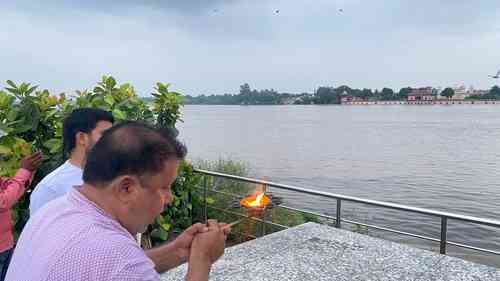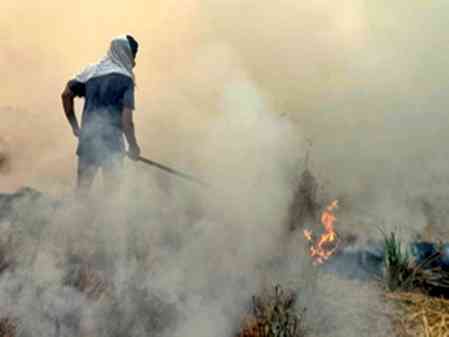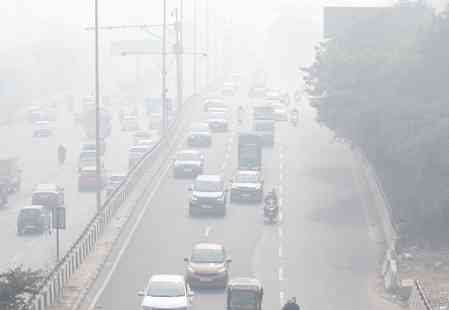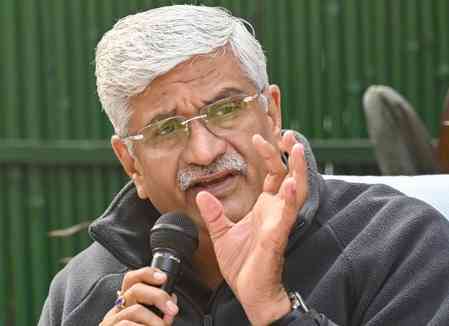Taj city: Yamuna in spate, delights people
People in Taj city are crowding the long river front to watch the rare spectacle of a river in full spate, overflowing the banks and breaching the encroached flood plains.

BRIJ KHANDELWAL
Agra, July 18 (IANS) People in Taj city are crowding the long river front to watch the rare spectacle of a river in full spate, overflowing the banks and breaching the encroached flood plains.
Old timers like the priest of Sri Mathuradheesh temple on the bank of Yamuna, Goswami Nandan Shrotriya recalls an old saying “the river never forgets its original course and once in a while does revisit it, as is presently happening.”
The Yamuna water has touched the rear wall of the 17th century monument of love, the Taj Mahal, after almost four decades. “Long back, maybe some 40 years ago, the river used to flow touching the foundation of the edifice and that probably kept the moisture level in the wells stable,” said tourist guide Ved Gautam.
In course of time, the Archaeological Survey of India officials ignored this aspect and developed an artificial park, further distancing the river from the main structure, Gautam added.
District authorities Tuesday morning confirmed that the water level in the river had breached the medium flood level of 499.0 feet. The high flood level is 508.0 feet. The discharges from the Gokul battage in Mathura, and the Okhla barrage, was decreasing. The water level could go up by another one foot in Agra by Wednesday morning, it was indicated.
Meanwhile, while it could sound cruel to those whose homes have been swallowed by the flood water, the activists of the River Connect Campaign in Agra, seemed relieved and happy, for they saw a kind of nemesis in the present crisis.
Environmentalist Dr Devashish Bhattacharya said for decades now the flood plains of the river from Delhi to Agra had been encroached upon. In Vrindavan, Mathura as also in Agra colonies had come up illegally on the banks, temples, and hotels, palatial mansions virtually choked the river reducing it to a Sewage canal.
Even the National Green Tribunal which sent out half a dozen teams of experts to demarcate the flood plains in Agra had failed to free the river of encroachments.
If the 1978 floods had been accepted as the benchmark to draw the line, then thousands of houses, colonies, multi-storey buildings would need to be demolished, but the politicians have lacked the will power to antagonise their vote banks, says river activist Jagan Nath Poddar of Vrindavan.
The Yamuna has flooded the whole Parikrama Marg in Vrindavan, and the road leading to the famous Dwarkadheesh temple along. Ishrat Ghat in Mathura is under water.
The feeling is one of relief and joy, as the flood waters after a long time would help scavenge mounds of debris, garbage and heaps of sewer silage that had piled up along the banks of the river.
Meanwhile, the Kailash temple in Agra has been closed as water has reached the main structure. The Taj view point near Mehtaab Bagh, right behind the Taj Mahal has been closed for the tourists because water has inundated the corridor for visitors.
Though the flood waters could be a source of fear and uncertainty for those affected, the tourists and the locals are enjoying the flooding.
“We are actually happy to see the river in its full glory, and rejuvenated with copious flow of water from upstream barrages. What man could not do, the cleaning, desilting, nature has done it.
“With the specter of global warming staring at us, we expect episodes of furious heavy rains more often, in the future which means the flood plains of the river have now to be cleared and the river allowed free passage,” say river activists Chaturbhuj Tiwari, Padmini Iyer.


 IANS
IANS 









